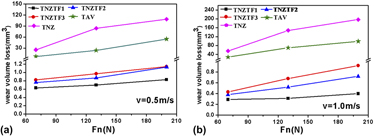Crossref Citations
This article has been cited by the following publications. This list is generated based on data provided by
Crossref.
Sun, Yu
Song, Yang
Zuo, Jianlin
Wang, Shengqun
and
Gao, Zhongli
2015.
Biocompatibility evaluation of novel β-type titanium alloy (Ti–35Nb–7Zr–5Ta)98Si2in vitro.
RSC Advances,
Vol. 5,
Issue. 123,
p.
101794.
Liu, L.H.
Yang, C.
Yao, Y.G.
Wang, F.
Zhang, W.W.
Long, Y.
and
Li, Y.Y.
2015.
Densification mechanism of Ti-based metallic glass powders during spark plasma sintering process.
Intermetallics,
Vol. 66,
Issue. ,
p.
1.
Li, Y.H.
Yang, C.
Wang, F.
Zhao, H.D.
Qu, S.G.
Li, X.Q.
Zhang, W.W.
and
Li, Y.Y.
2015.
Biomedical TiNbZrTaSi alloys designed by d-electron alloy design theory.
Materials & Design,
Vol. 85,
Issue. ,
p.
7.
Antony Vasantha Kumar, C.
Selwin Rajadurai, J.
and
Sundararajan, S.
2016.
Performance enrichment on tribological characteristics of powder metallurgy processed aluminium particulate composites by inclusion of rutile (TiO2).
Journal of Materials Research,
Vol. 31,
Issue. 16,
p.
2445.
Amherd Hidalgo, Alexandra
Frykholm, Robert
Ebel, Thomas
and
Pyczak, Florian
2017.
Powder Metallurgy Strategies to Improve Properties and Processing of Titanium Alloys: A Review.
Advanced Engineering Materials,
Vol. 19,
Issue. 6,
Zhang, Guo-Sheng
Guo, De-Feng
Li, Ming
Li, Jing-Tao
Zhang, Qian
Li, Xiao-Hong
and
Zhang, Xiang-Yi
2017.
Tailoring Microstructure and Tribological Properties of Cold Deformed TiZrAlV Alloy by Thermal Treatment.
Acta Metallurgica Sinica (English Letters),
Vol. 30,
Issue. 5,
p.
493.
Ye, X.X.
Imai, H.
Shen, J.H.
Chen, B.
Han, G.Q.
Umeda, J.
Takahashi, M.
and
Kondoh, K.
2017.
Dynamic recrystallization behavior and strengthening-toughening effects in a near-α Ti-xSi alloy processed by hot extrusion.
Materials Science and Engineering: A,
Vol. 684,
Issue. ,
p.
165.
Yılmaz, Eren
Gökçe, Azim
Fındık, Fehim
and
Gülsoy, Hamit Özkan
2018.
Influence of Zr addition on the corrosion behavior of biomedical PIM Ti-16Nb alloy in SBF.
International Journal of Materials Research,
Vol. 110,
Issue. 4,
p.
379.
Zhang, Ningbo
Sun, Dongli
Han, Xiuli
Wang, Daqun
Wang, Qing
Liu, Hao
and
Yu, Zhenhe
2018.
Dry-Sliding Tribological Properties of TiAl Alloys and Ti2AlN/TiAl Composites at High Temperature.
Journal of Materials Engineering and Performance,
Vol. 27,
Issue. 11,
p.
6107.
Kang, LiMei
and
Yang, Chao
2019.
A Review on High‐Strength Titanium Alloys: Microstructure, Strengthening, and Properties.
Advanced Engineering Materials,
Vol. 21,
Issue. 8,
Li, Yuhua
Zhang, Qian
He, Yuxin
Zhao, Rong
Chu, Jinghui
Niu, Libin
and
Qu, Juxin
2024.
Sliding and Fretting Wear Behavior of Biomedical Ultrafine-Grained TiNbZrTaFe/Si Alloys in Simulated Physiological Solution.
Materials,
Vol. 17,
Issue. 4,
p.
787.
Kowalczyk, Agnieszka
Pura, Jarosław
Sotniczuk, Agata
and
Garbacz, Halina
2025.
Effect of bulk and surface mechanical treatments on the tribological properties of Ti-13Nb-13Zr alloy for biomedical applications.
Tribology International,
Vol. 206,
Issue. ,
p.
110605.
